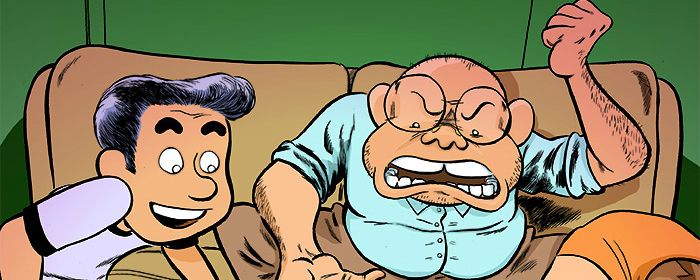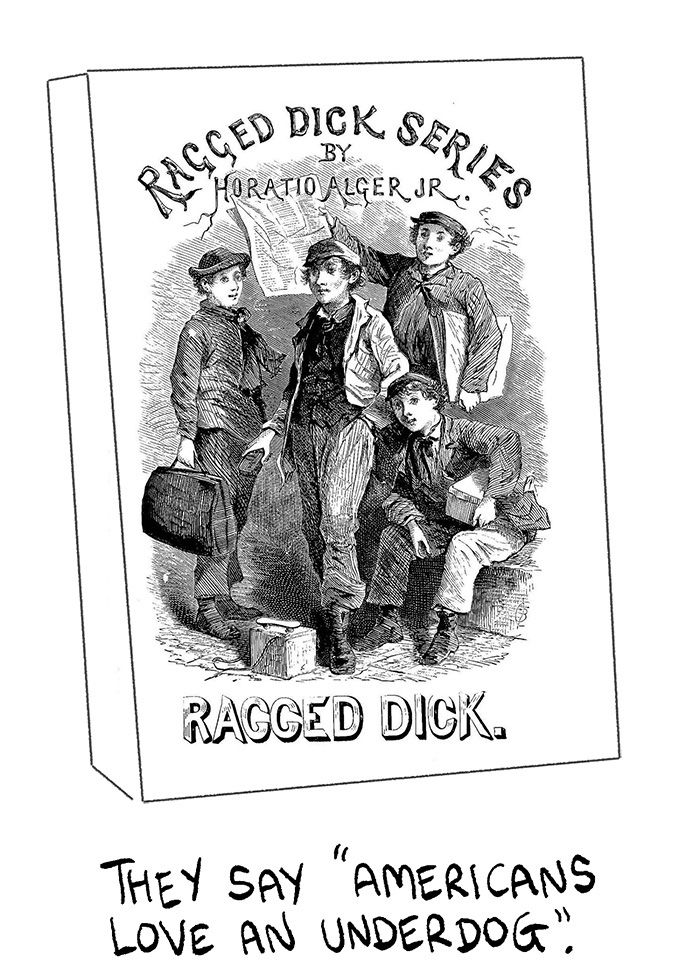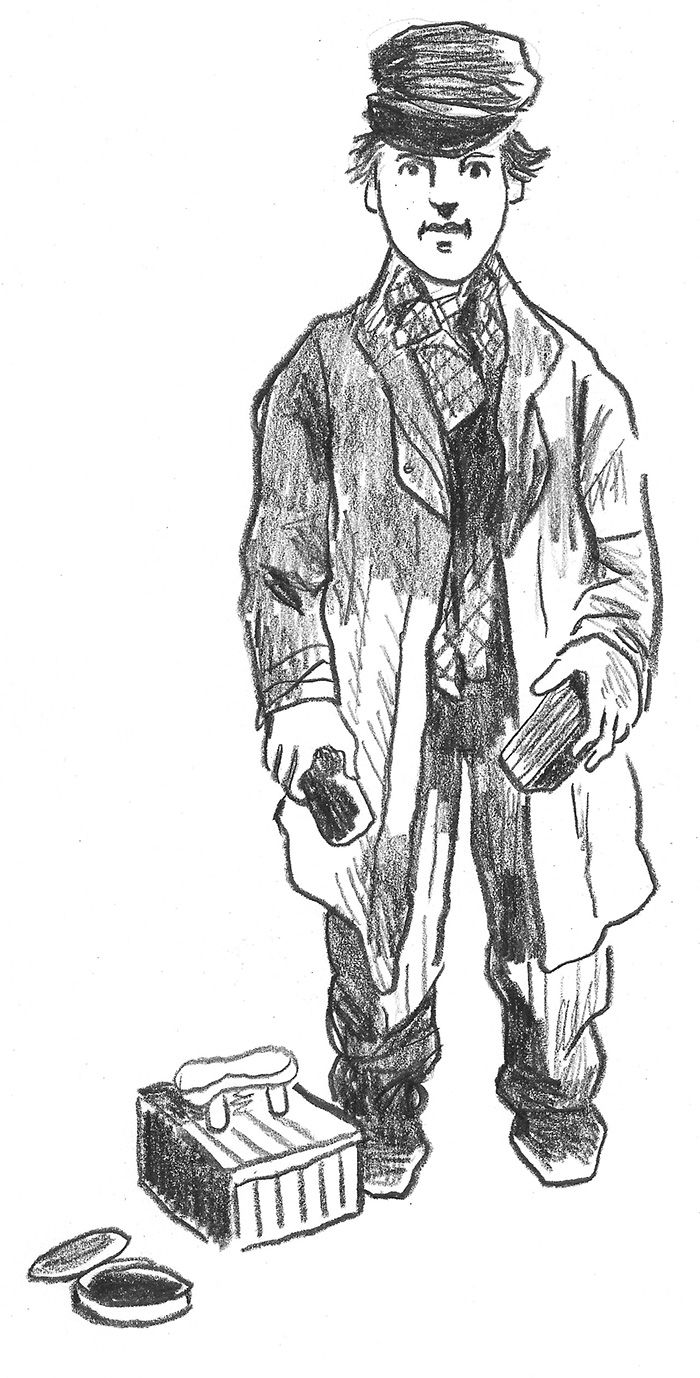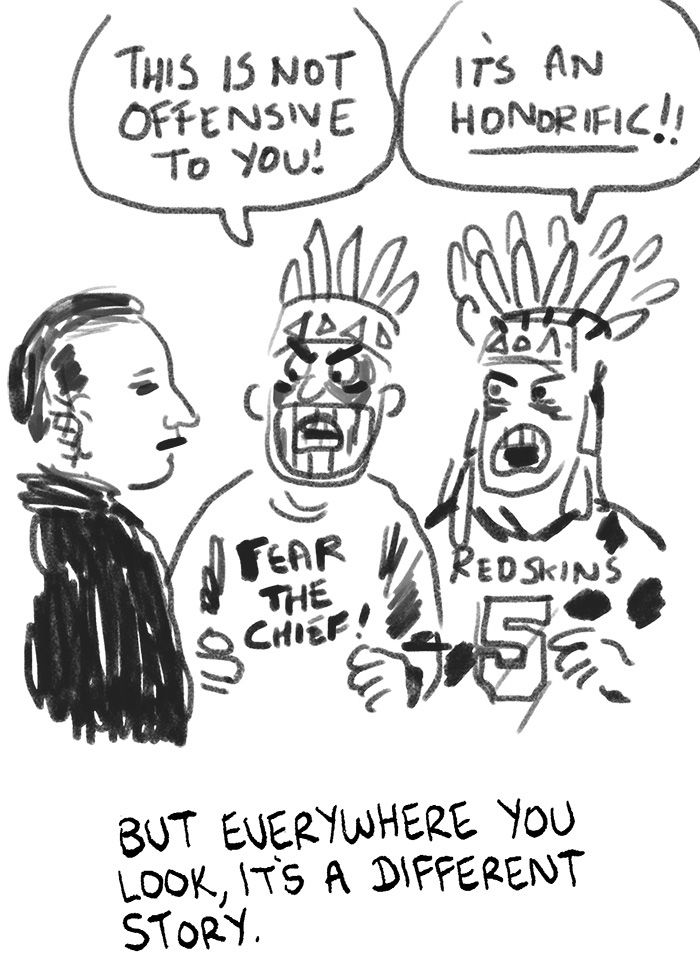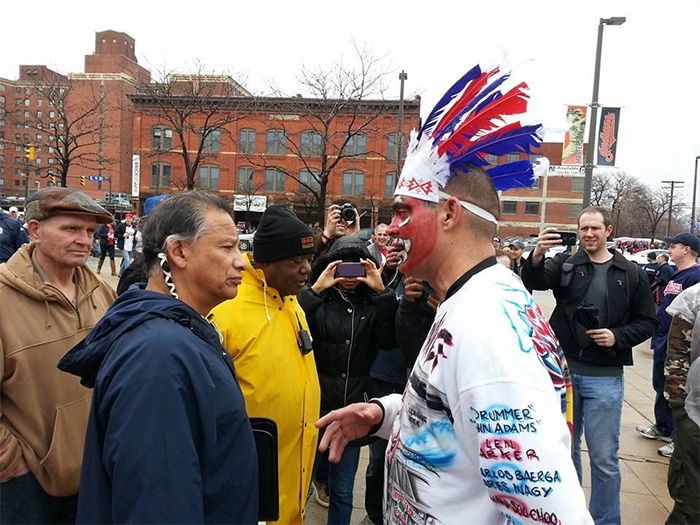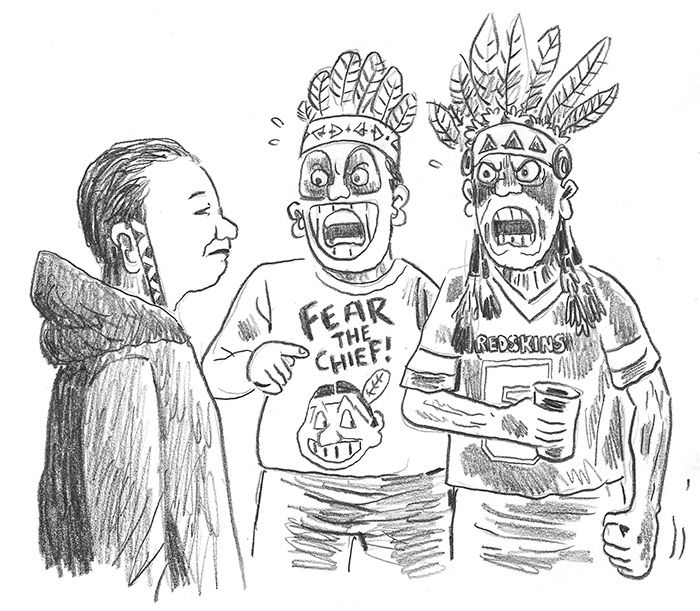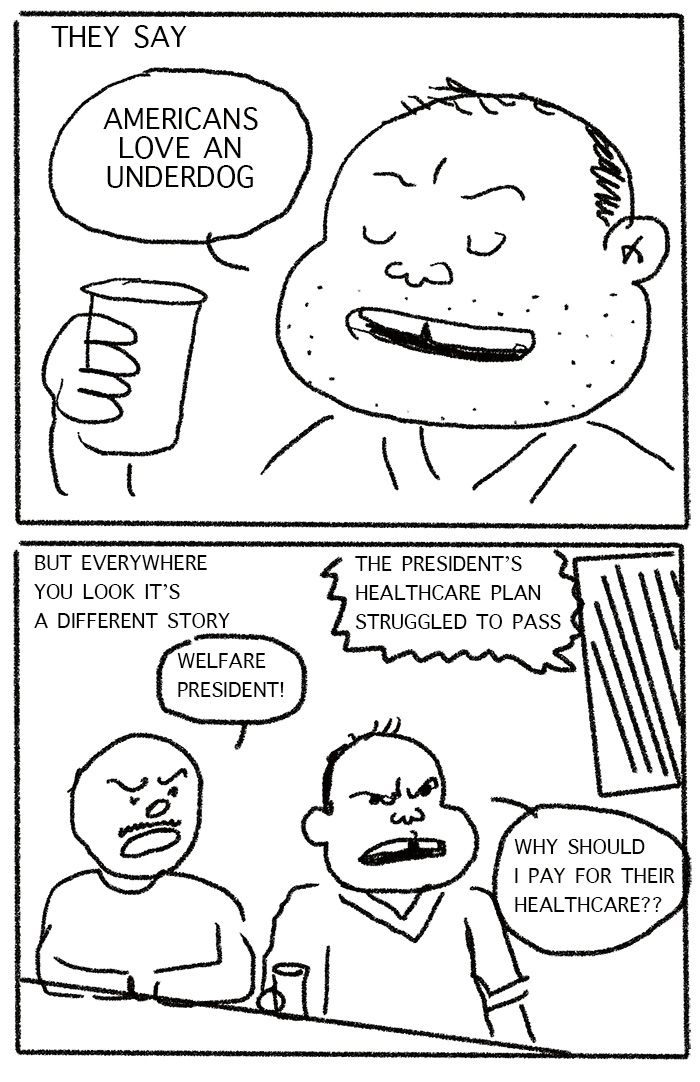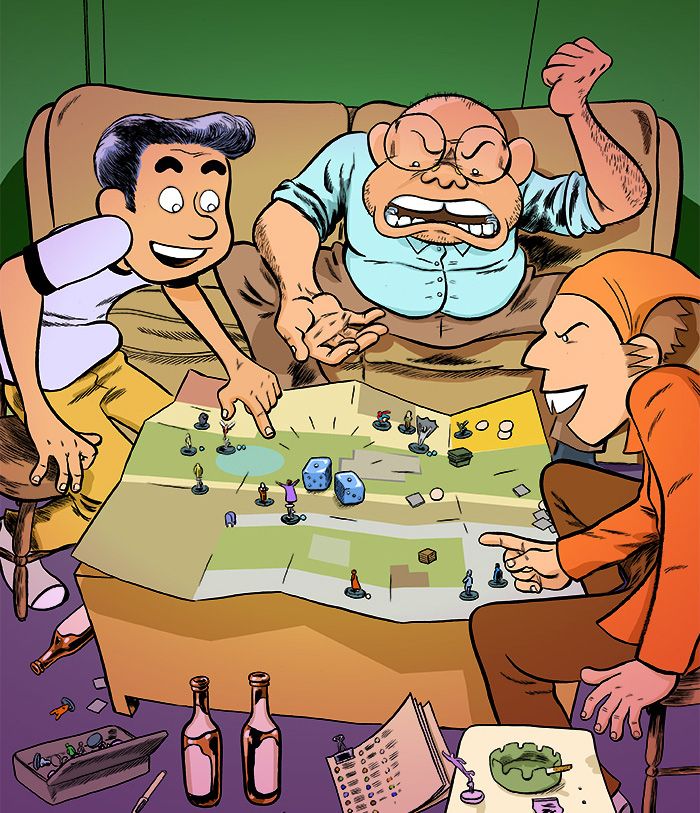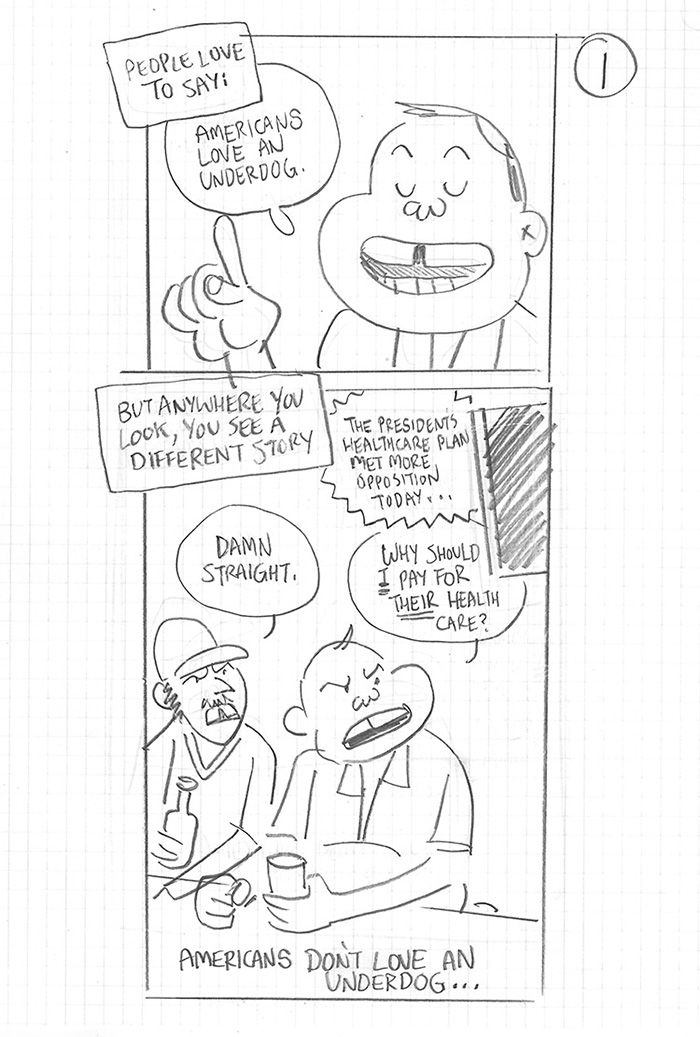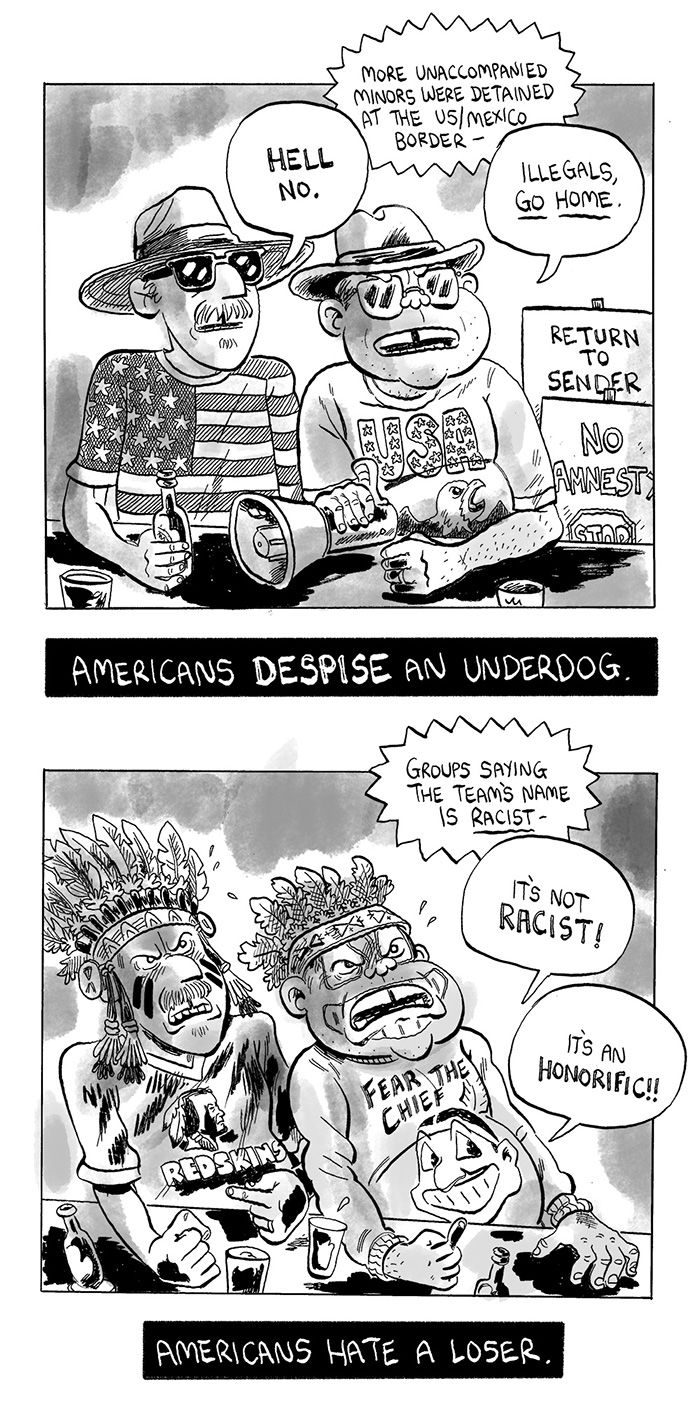Late last year, I noticed that writer/artist Mike Dawson was contributing original content to The Nib, a collection of political cartoons, comics journalism, humor and nonfiction at Medium.com edited by Matt Bors.
Curious to learn what led him to participating at The Nib, and hoping to see if I could get Dawson to break down one of his recent pieces that ran there, I reached out to the cartoonist. It turns out he was more than happy to reveal the development process for his Oct. 6 strip, "The Underdog Myth."
For the past decade I’d been concentrating almost exclusively on writing long-form “graphic novels." I completed Angie Bongiolatti in January of 2014, after which I thought it might be nice to try something different for a while. I began writing and posting short comic essays on my Tumblr blog.
A few months into 2014 I began corresponding with Nib Editor-in-Chief Matt Bors. Initially we were talking because I was hoping he might be willing to post an Angie Bongiolatti excerpt at the site, but the conversation soon changed into one about me pitching ideas for comic essays to The Nib.
I sent Matt and associate editor Eleri Harris a bunch of comic ideas -- some were rejected, some eventually became comics. This is what I wrote pitching "The Underdog Myth":
"Sorry to keep barraging you with comic ideas, but I have another one I'm planning on making for my Tumblr, and I wanted to send you the rough draft.
This one's pretty simple: People say Americans love an underdog, but the evidence surrounding us should convince us that Americans hate an underdog. What Americans love are the stories where an underdog becomes an unlikely winner, and they are very happy to forget about the parts where it was Americans making it hard for the underdog all that time."
I’ve found an easy way to share pitches and works-in-progress is to just make them a private post on Tumblr and send out the link.
Text-wise, a lot of the arc of the "Underdog Myth" is here in the rough draft: They say Americans love an underdog, but everywhere you look it’s a different story. Americans don’t love an Underdog, they love Underdogs who have somehow managed to become one of history’s winners.
Visually, the piece required a lot of work. I had a couple of ideas for basic imagery, but hadn’t put much initial thought into how the words and pictures were going to interact.
In the pitch, for the line “They say Americans Love an Underdog” I’d just grabbed a picture of Horatio Alger’s Ragged Dick off of Google image search. When I hear the words “underdog story”, my mind goes to Ragged Dick - a prime example of a “rags to riches” storyline in American history - a story where a plucky underdog gets ahead through honesty and hard work.
My first thoughts were to take the found-imagery and render it in a soft-pencil style.
Another example of imagery that came pretty quickly was the picture of the boorish sports fans, decked out in full-on racist Indian-style sports-jerseys and makeup, shouting in the face of a resigned elderly Native American man.
This is inspired by a real-life photo of a Cleveland Indians fan:
Again, I thought to just take that same imagery, and render it in a nicely drawn pencil style.
I got this far, and then began to doubt the approach. Was I just going to keep drawing versions of real-life photos from history and current events? Was I going to solve all the visual problems of the strip this way? It seemed boring. It also seemed pointless. Just drawing some photo of a news photo of kids getting detained at the border, or the famous pictures of the Little Rock Nine … what was the point? Why draw the photos at all? Why not just do the thing as a slideshow with actual photos from history?
I worked on this problem for a while, and eventually got the idea to take the two boors from the Native American panel and make them the central characters of the strip. I’d have them featured in every panel, and focus in on them expressing their world-views, through dialogue and dress.
I tinkered around with character design for a bit, and eventually hit upon something that was admittedly mostly an in-joke to myself, but also in my mind, made complete sense.
Between 2002-2004, I self-published a six-issue series called Gabagool! with a co-writer named Chris Radtke. This was a humor comic, in the vein (we liked to think) of '90s alt-comic classics like Hate or Minimum Wage. It mostly concerned the adventures of nerdy 20somethings Christopher Vigliotti and his roommates Vinnie and Ritch. Storylines varied from the three of them starting their own bounty-hunting business, to them taking a vacation to the seedy Jamaican swingers resort “Hedonism." Along the way, they spent of a lot of time trying to get laid, and of course, things rarely worked out for them.
It was funny and well-written, but also very much of it’s time: The three protagonists were in their ways, outcasts -- they liked playing video games and reading comic books. They spent their time smoking weed, watching Star Wars, and striking out with women. You were supposed to root for them, as underdogs in a world run by jocks, alpha males, and overachievers - like the nerds in the Revenge of the Nerds movies. But, just as in those movies, there was a nasty element to these characters … outsiders as they were, they still ranked themselves higher on the totem pole than women, minorities, anyone who wasn’t straight, or characters with disabilities. The story was told from a white, male, hetero-normative point of view. Those characters were still, in their geeky ways, complete assholes.
It made sense to me to take these characters who’d I’d written back when they were “on the wrong side of 25," and wonder who they might be in their 40s.
It was important, I felt, that this little nod to my own creative past, make no impact on whether or not "The Underdog Myth" comic made sense. There are only a handful of readers out there who might have gotten the joke. "The Underdog Myth" had to be able to stand alone.
Once I’d re-envisioned the comic from this new boorish point-of-view, the rest fell rapidly into place. The comic became fun to draw. More importantly, with this new angle, it felt like it needed to be made as a comic.
The comic went up on The Nib in October, and seemed to do well in terms of getting read and recommended. The agreement with The Nib gives them 30-day web-exclusive rights, so I waited until mid-November to post the comic on my Tumblr. Currently the post is closing in on 105,000 notes, which makes this by far the most widely read comic I’ve ever written. Considering that The Nib paid me for the piece, I consider it a success on any level.
There are aspects of this comic that make it different from much of my other work. Many of my essays are written from a personal first-person perspective. A lot of them, such as "Am I Good?," "Rules for Dating My Daughter" or "War of the Worlds," are cartoon dialectics, where I turn a thought or an issue over and over in my mind and try to shake out my thoughts on the matter. "The Underdog Myt"h is a rare example where I express an opinion directly and clearly. That is probably one reason the comic has been shared so much, and it’s one more reason for me to feel personally satisfied with this attempt at making comics.

